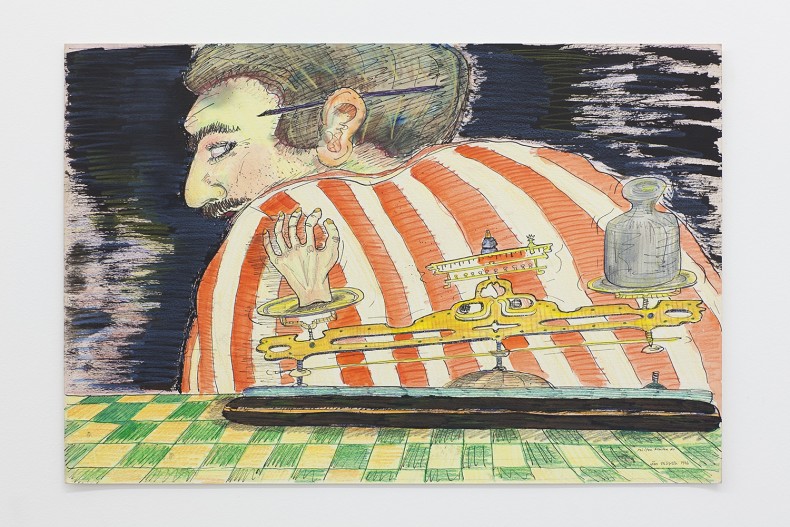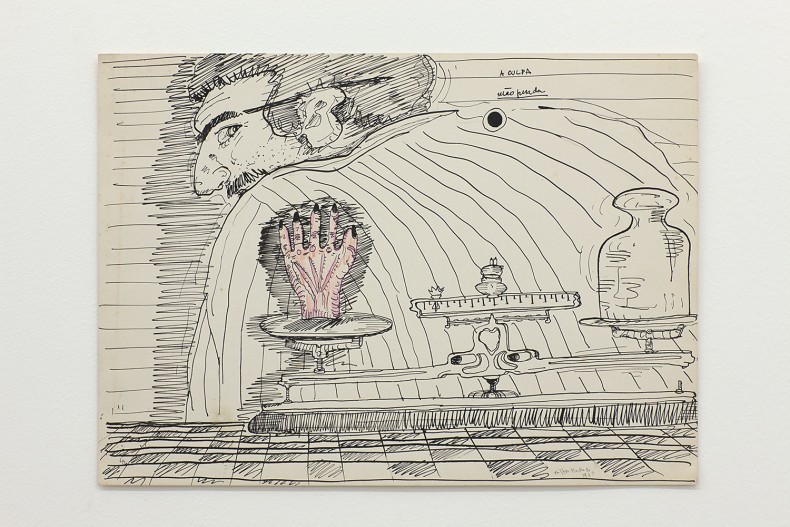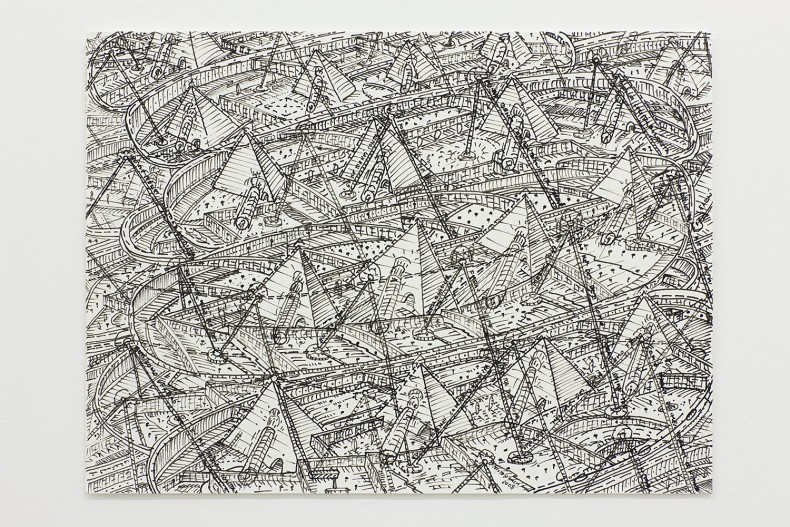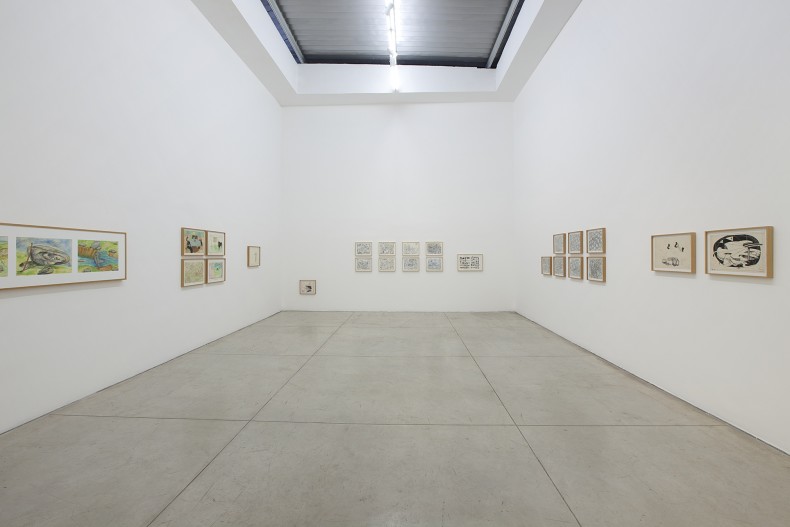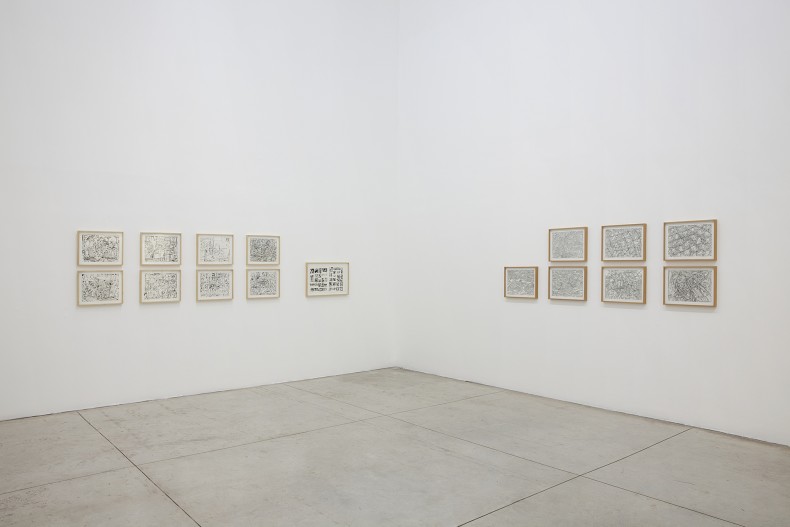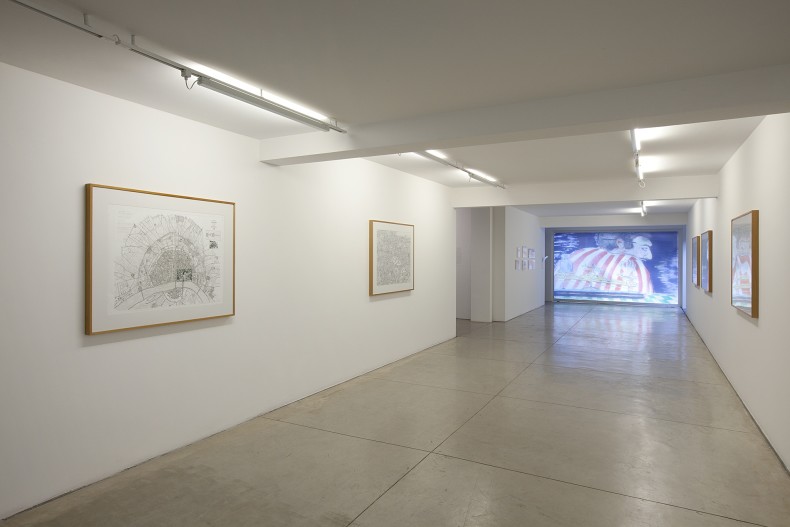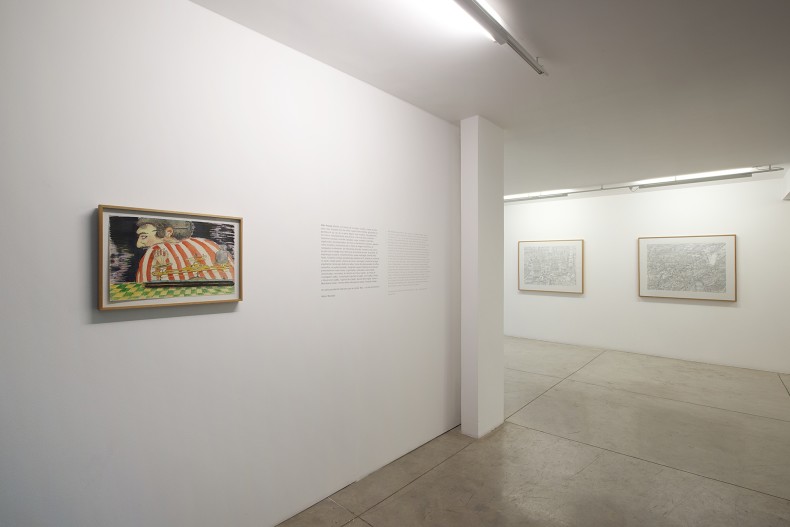On August 24, Saturday, from 11 a.m. to 3 p.m., Galeria Nara Roesler inaugurates the exhibition Mão Pesada, by Milton Machado. The show includes approximately 40 drawings created between 1970 and 2013, plus a selection of videos by the artist. Esperança no porvir, a comic book edited by the artist in 1973, will also be relaunched.
In the words of the artist:
Mão Pesada [Heavy Hand]. Pack. A group of howling mongrels, tails to the moon; exceptional sketches, almost all never seen before and kept in drawers for 40, 30 , 20, 10 years. Some are more recent, but equally contrary and invariably anachronic, drawn with a quill and India ink. Drawings that are rabid, wayward, slavered, dirty, mouldy, shoddy, lousy, shambolic, secret and clandestine, nauseous, sometimes disgusted, produced under the effects of sea journeys, northeastern beach-flanked navigations, driven by blue cherry, purple haze and manga rosa. Memories of men at sea, of prisons, of hopes for the future, being stranded, almost shipwrecked, fatal diverticulitis, presidential burial parades screened on TV, the diretas-já protests, afternoon romances, things coming out, smells of the court and of the sewers, lake monsters spreading shit everywhere, fruits of heavy hands, of red eyes, of parallel actions, marginal (almost betraying) of the supposedly noblest, most organized, acclaimed, collected, reputed and well-thought productions, of História do Futuro [History of the Future] (1978-), As Férias do Investigador [The Investigator’s Vacation] (1981), Conspiração Arquitetura [Conspiracy Architecture] (1981), (1=n) (1983), Somas e Desarranjos [Sums and Disarrangements] (1985), Fugitivo Zero [Fugitive Zero] (1987), Mundo Novo [New World] (1990), Sobre a Mobilidade [On Mobility] (2001), Homem Muito Abrangente [A Very Far-Reaching Man] (2005), Produção [Production] (2009) ...
Although the production of Milton Machado is notably multidisciplinary, his drawing is especially highlighted in this exhibition. The show's title is borrowed from a work from 1977. Enlarged and printed on adhesive vinyl, displayed on the window of Galeria Nara Roesler, Mão Pesada is the first of the works with which visitors make contact.
In his work, Milton creates designs and articulates narratives that seem logical, but which are, in fact, fictional and unrealistic. His storytelling quality, pointed by critic Michael Asbury, originates characters and parallel worlds stubbornly conceptualized and traced.
As examples, O Monstro da Lagoa (1976), "a colossal pile of shit, resulting from accumulated flushes of the irregular sewage in the waters of the Rodrigo de Freitas Lake", fruit of speculation fueled by fictitious Marcos Tramoia, mayor of the city, and Servo Gourado, an unscrupulous builder; anthropomorphic animals who politely sit at the table in Prato de resistência (En tenue de ville), 1976, or the fool, proudly displaying his pair of Spectacles for International Fools – a sophisticated eyewear collection in search of sponsors for its industrial production – in The fool is cool, 1987.
The fool is cool is part of the series PEARL Drawing Pad, produced between 1984 and 1987, using a single drawing instrument – a dropper attached to the ink container, used as both pen and brush. While not following any roadmap or previous project, some drawings in the series can be seen as statements of historical facts, such as O país agoniado and Eu vi o cortejo na TV, both from 1985, regarding the funeral of Tancredo Neves.
The title of the work and the artist's account on each of them is essential for the understanding – or the deviation of meaning – of his work. Luiz Camillo Osorio commented this issue in the work of Milton Machado: "How far can the text determine what we see? How is that what we see can be seen in other ways after reading the text?”
Among the videos selected for the exhibition are História do Futuro (2010, part of his installation at the 29th International Biennial of São Paulo, with drawings, sculptures, photographs and texts), Vermelho (2009, awarded in Panoramas/Videobrasil in 2010), Edifício Galaxie (sobre a mobilidade) (1994/2002) and Homem Muito Abrangente (2002).
Vermelho e Pintura integrate the series Produção, presented in 2009 at Galeria Nara Roesler, in which the artist moved objects and images from the context of a steel furniture factory to the space of an art gallery. Edifício Galaxie (sobre a mobilidade) complements a set of seven photographs and photomontages, relativizing the opposition between – in principle – the mobility of vehicles and the immobility of buildings.
Homem Muito Abrangente, directed by Cacá Vicalvi, documents the preparation, the performance and the installation of such work in the group show Territórios, curated by Agnaldo Farias at Instituto Tomie Ohtake, 2002. "This is a performance with two main actors: one circus knife thrower and his assistant, that is myself," explains the artist. About Homem Muito Abrangente, he says: "The HMA can be all things, doing whatever he wants. However, he is vetoed a single occupation: his own. Always beyond the limits, Homem Muito Abrangente is the purest exterior."
The comic book Esperança no Porvir will be re-launched in the exhibition. In one of his stories, Milton Machado tells the saga of Pedro José "a respectable worker in the branch of investments that liked samba and had his usual daily lunch at Spaghettiland". Like Pedro José, Milton was arrested by agents of the military dictatorship, which underwent investigation focused on the content of the magazine. "What to me were 'trees' were 'workers' for them, their 'subversive elements' were my 'flying saucers', and any reconciliation was impossible."
During the exhibition, on a date to be announced, the book História do Futuro, by the artist and collaborators Guilherme Bueno and Tania Rivera, will be released at the gallery.
